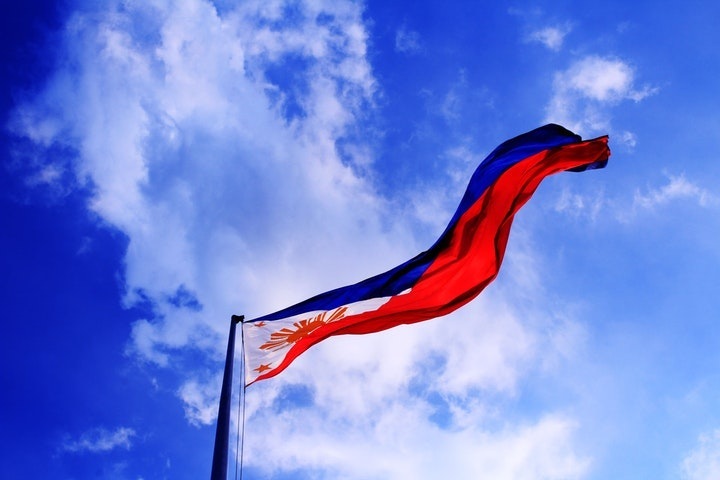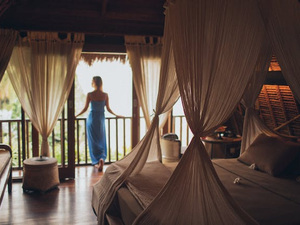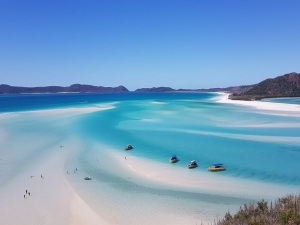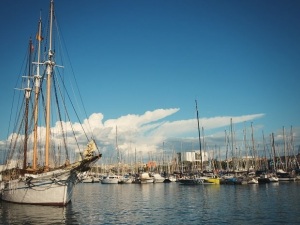There are as many reasons to visit a new destination as one may wish to imagine, from cultural landmarks to exotic cuisines, adventure travels or photogenic landscapes and for travellers to Asia, the continent offers many more wonders than one would ever be able to unveil; cultural festivals and celebrations are amongst them. For many travellers, local events spark their interest for one particular destination and, with the dates and location in mind they plan their trip around it. For others, the celebrations get mixed into the itinerary as they build their travel plans. And some travellers even come across them while on the way. Whatever the reasons to celebrate on the road, there are plenty of interesting events taking place all over the continent, and this post brings you ten that we believe are must-see cultural festivals in Asia.
1 Holi, the festival of colors
India, 13 March
The festival of Holi marks the beginning of spring and the triumph of good over evil in Hindu mythology. It is the time to end conflicts, to revive love and a good reason for Hindus all over the country and abroad to celebrate in a mass party that stars with the burning of the demon Holika and continues with rituals (puja), family visits, delicious food, sometimes bhang and, above all, large vibrant street gatherings where nobody can escape clouds of rainbow-colored powder and water thrown at each other, a tradition believed to have been started by Lord Krishna, who loved to play pranks as a young boy. The festival is celebrated across India, but the best-known hubs are probably the temple towns of Mathura and Vrindavan, not far away from the capital.

Tips: It may seem obvious, but it’s always worth reminding to wear clothes that you will happily discard and protecting mouth and eyes from the powder. Also, watching out for large crowds as the local party mood may get a bit overwhelming for foreign visitors.
2 Nowruz, the Persian new year
Iran, 21-24 March
Nowruz (new day in Farsi) is the Persian new year, celebrated in Iran and other parts of the Middle East, following an over 7000 years old tradition that marks the end of winter and the coming of fertile spring. Nowruz celebrations are full of symbolisms, including the setting of a traditional Haftseen table with ingredients and objects containing all the good wishes for the coming year, or Fireworks Wednesday, reminder of the festivity’s Zoroastrian past. The celebration mood is added by the joy with which Iranians take on the road to welcome the season outdoors, with picnics and camping. Visiting Iran during Nowruz can add a radically new dimension to the journey and even if one risks being stuck in traffic for long hours, there will be plenty of opportunities to enjoy the trip with the always friendly and extremely hospitable Iranians.
Tips: It’s more than recommendable to book accommodation well in advance, as Iranians themselves travel during these dates and hotels can get full pretty quick. Even if in a celebration mood, social rules in Iran are pretty strict, and travellers should observe dressing, drinking and other restrictions for their own safety and enjoyment.
3 Mevlana Festival (Mevlâna Anma Törenleri)
Turkey, 10-17 December
The festival of the swirling dervishes commemorates the death of the 13th century Sufi poet Rumi, known as Mevlana to his followers. Every 17th of December in the Anatolian city of Konya, the Mevlevi brotherhood worships the saint on the date known as his “wedding night” with Allah. With their long robes and tall hats, the dervishes whirl receiving the blessings of heaven and bringing them down to earth in a ceremony of dance and spiritual performance. More than a million people attend yearly this ten day festival of devotion, listed amongst UNESCO Masterpieces of the Oral and Intangible Heritage of Humanity and one of the very good reasons to travel to Central Anatolia even in the cold winter time.

Prices: 50TL (20$ approx.)
Tips: There are plenty of activities and celebrations during the festival days. It is important to book tickets and accommodation well in advance.
4 Songkran Water Festival
Thailand, 13-15 April
Songkran is the New Year celebration in Thailand and many South East Asian countries. With traditional Buddhist roots, it is the time of the year when Thais honour their families and elders, onto whose palms young people pour fragrant water during Rod Nam Dum Hua ritual on the first day of Songkran. It is also the time of spring-cleaning and it is believed that splashing water symbolically cleans the misfortunes of the year gone by. Traditionally Thais would pour a bowl over family members, but as the festive spirit took over the celebration, buckets and hoses were brought into the party that has grown into the largest water fight known. This is a nationwide party but Chiang Mai is one of the most popular hubs amongst travellers to enjoy this water fest.

Tips: Comfortable clothes and anything you do not mind getting wet are the best dress code for this water party, but it is recommended to wear non-slippery shoes to enjoy the street party.
5 Naadam Festival
Mongolia, 11-13 July
Naadam Festival is the Mongolian celebration of its nomadic culture and a reminder of the country’s independence in 1921. With its origin in the wedding and hunting celebrations of the Mongol Army, it has now become an extraordinary display of sports and tradition. The Naadam Stadium holds an elaborate Opening Ceremony followed by two days of horse racing, wrestling and archery competitions and performance, while a whole folkloric festival unfolds in its surroundings with crafts, music, food and locals in a party mood, all good reasons to visit Ulaanbaatar on a journey across the Mongolian desert and steppe.
Price: 10 – 25$
Tips: You are likely to spend long hours under the sun, appropriate clothing and protection is more than recommended.
6 Winter light festival
Japan, (November – March)
Winter illuminations are a growing event in different cities of Japan, but probably one of the most famous takes place in the Nabano No Sato Park in Kunawa, home to extensive cherry trees and flower gardens that feature over the winter months an elegant installation of over seven million LED lights creating formidable shapes and designs. Every year the decoration revolves around a particular theme and has previously featured the well- known tunnel of light or a beautiful illuminated version of Mout Fuji amongst other impressive displays. This long-term festival is a spectacle that will surely add magic to any winter journey to Japan.

The park is open throughout the year, but the winter illuminations run from mid-November to mid-March.
Tips: The park is open 9am – 9pm. It is a popular destination, so one should get ready to share the space with large crowds. Remember it is winter and outdoors so wrap up in warm clothes to enjoy the evening.
7 Boryeong Mud Festival
South Korea, (estimated 14-23 July)
This festival was actually born out of a marketing campaign to promote the cosmetic properties of the mineral-rich mud found in the area Boryeong and brought for this occasion to Daecheon beach, dating back to 1998. The event took on its own path, promoted partly by word of mouth and greatly by the unique photos of muddy participants, turning it into an international event filled with activities, from mud races and wrestling to photography contests or, for the laid-back visitors, beauty mud therapies, soap making workshops or massage. The party atmosphere is fuelled up by giant inflatable slides, a performance platform and pop music soundtrack with musicians and attendants from all around the world gathering to splash and smear grey mud all over themselves.
Tips: Even though the festival venue is a day-trip away from Seoul, it is worth staying overnight to not miss any of the fun.
8 Rainforest World Music Festival
Borneo, 14-16 July
A special event for all music lovers, and especially for world music fans, this festival brings together top musicians and performers on a stage set right in the midst of the Borneo jungle. The program includes international and indigenous artists, as well as a whole program of events, workshops, food and crafts gathered in a traditional village setting. Music, nature and good vibes are the best reasons to set one’s travelling steps towards Sarawak.
Tickets: 110 – 153Rm. (25 – 35$)
Tips: Bringing your own mats or hammocks to the festival is a good idea that will add up to the relaxed atmosphere. And Saraqwak is a special place, worth spending a little extra time soaking into its nature, culture and history.
9 Chinese New Year in Singapore
Singapore, (27 January – 2 February)
The Chinese New Year is celebrated all over the world, in every place with large Chinese population but Singapore is rated amongst the most joyful and spectacular, with a mix of old and new traditions, sounds and flavours. The main festive hubs are the River with giant handcrafted lanterns, performances and spectacular fireworks and the Chingay Parade, the largest street and float parade in Asia, with dragons, lion walkers, jugglers and acrobats that one may imagine the best Chinese New Year needs to have. The streets are filled with a party mood, magic shows and joy from locals and visitors from all over the world, and for the best festive food and traditional temple rituals one can always head to Chinatown.

Tips: Red is the colour of the party, wear some for good fortune. If visiting a local home, a pair of mandarins is an appropriate gift to bring.
10 Harbin’s Ice & Snow Sculpture Festival
China, (5 January – 5 February)
Zhaolin Park is annually transformed into a fairy-tale land of mythical figures, amazing buildings, monuments and giant structures sculpted on ice and snow with chainsaw and picks in temperatures of -20ºC, as the city of Harbin receives the cold Siberian winds. The origins of the festival are traced back to a traditional ice lantern show that took place for the first time in 1963. Nowadays the celebration has grown into an international show and competition with millions of attendants that turns into a magical spectacle at night when the interior of the sculptures is illuminated in bright colours. The two main exhibition hubs are Sun Island and Ice and Snow World, but during the time of the festival the whole city is bustling in activity.

Tickets: 150 – 300 Yuan (25 – 50$)
Tips: Proper winter clothing is more than needed as well as sunglasses and a positive attitude towards sub-zero temperatures.
Bonus - Ati-Atihan Festival
The Philippines, 10–19 January
Ati-Atihan Festival is one of the oldest Philippine celebrations. It is held to honor the Santo Nino (infant Jesus) so it is celebrated as a religious festival.
The festival takes place in several cities across the Aklan province, but if you want to be part of the biggest celebrations, head to Kalibo city. You will see dancing groups wearing very colorful costumes, themed floats, marching bands, and local people with paint all over their bodies. It is best to experience the festival with a local. You can match with some locals on some Philippines dating site.





